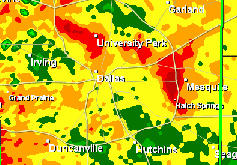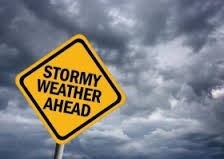Hundreds of people die each year from severe weather-related incidents such as tornadoes, lightning and flash flooding and the peak months for tornadoes in Texas are March, April and May. Spring and summer in Texas are also notorious for severe thunderstorms.
To ensure your family’s safety develop an emergency plan and be certain that all family members know what to do during a weather emergency. Visit www.redcross.org/services/disaster/keepsafe/ for information.
To stay informed during severe weather, use an NOAA weather radio with a battery backup, the Internet – www.nws.noaa.gov or stay tuned to a local radio or television station. The National Weather Service issues a “watch” when conditions are favorable for the formation of severe weather and a “warning” when severe weather is indicated by radar or has been reported by eyewitnesses.
Thunderstorms can spawn tornadoes and cause heavy winds, flash flooding, lightning and hail and it is important to become familiar with the following safety tips for each of these weather conditions.
Lightning
- Lightning strikes the earth 20 million times each year.
- If thunderstorms are predicted, postpone outdoor activities.
- Follow the 30/30 lightning safety rule: If after seeing lightning, you cannot count to 30 before hearing thunder – go inside and stay there until you hear no thunder for 30 minutes.
- When caught outdoors during lightning, take shelter in a sturdy building or hardtop car and keep the windows closed.
- Avoid touching any metal.
- Stay away from tall objects such as towers, utility poles, power lines and isolated trees.
- If in a wooded area, seek shelter under the shortest trees.
- If no shelter is available, find a low spot away from tall objects, being careful to choose a spot that is not subject to flooding. Squat low to the ground on the balls of your feet and place your hands on your head and your head between your knees. Become as small
 as possible without lying down. Minimize contact with the ground.
as possible without lying down. Minimize contact with the ground. - If you are in or on the water, seek shelter on dry land.
- When at home, unplug all unnecessary appliances and avoid using corded telephones and electrical appliances. Do not take a shower or bath during a storm. Turn off air conditioners, as power surges can cause damage.
Straight-line/High Winds
- High winds are responsible for the largest part of thunderstorm damage and can exceed 100 mph.
- Seek sturdy shelter and stay away from windows and doors.
- Put as many walls between you and the outside as possible.
- Avoid driving as high winds can make controlling vehicles difficult.
- Secure loose items such as patio furniture.
- Keep property clear of dead, rotted trees and loose branches that might be blown down and cause damage or injury.
Tornadoes
- Tornadoes can develop quickly with no advance warning. Watch for signs like dark, often greenish sky, large hail or a loud roar.
- Seek shelter such as a basement or small interior room or hallway on the lowest floor and get under sturdy furniture or in the bathtub. If possible, cover yourself with a blanket or sleeping bag.
- Put as many walls between you and the outside as possible. Stay away from windows and doors.
- Get out of cars. Never try to outrun a tornado – leave your car and seek safe shelter.
- If outside, lie flat in a ditch and cover your head with your hands.
- Watch for flying debris.
- Leave mobile homes and go to the lowest floor of a nearby sturdy building.
Flash Floods
- Never walk, swim, or drive in floodwaters.
- Do not drive through moving water.
- Steer clear of high water, storm drains, ditches, culverts, etc.
- When floodwaters are encountered, stop, turn around and go another way. Get to higher ground.
- Never let children play near storm drains.
Have an emergency kit containing the following items
- First aid kit
- Portable radio/extra batteries
- Flashlight/extra batteries
- Emergency food and water and a manual can opener
- All necessary prescription and nonprescription medications


